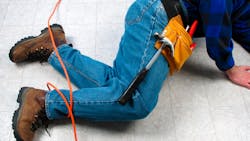Proving a Negative: The Cost Benefits of Injury Prevention
“The greatest opportunity to reduce costs of injuries is to eliminate or prevent those injuries from occurring in the first place,” said Bill Horsford, manager of team member relations at Toyota Motor Engineering and Mfg.
Horsford and fellow panel members Bill Margaretta, president of the New Jersey State Safety Council, Wayne Punch, director of safety/health/security at Milliken & Co. and moderator Mike Abcarian, partner with Fisher & Phillips LLP, discussed the true cost of injuries and how investing in prevention pays off with both a healthier work force and bottom line.
According to Margaretta, EHS professionals are faced with a unique challenge: To demonstrate that preventing injuries will save money, they must prove a negative. “We’re the only profession in the entire world that gets paid for something not happening,” he said. “How do you prove that?”
Breaking Down the Costs
To help EHS professionals prove that negative, Margaretta outlined the five common cost elements related to workplace injuries:
- Emergency response
- Reports and case management
- Interrupted operations
- Lost revenue
- Cost of damage
With that number, “now you have management’s attention,” Margaretta said. “Now you can do some bargaining with the CFO on improvements.”
Margaretta added that he would like to see a nationally recognized program that outlines exactly how companies can reliably compute the real costs of injuries. “Let’s get this ... and improve the profession,” he said.
About the Author

Laura Walter
Laura Walter was formerly senior editor of EHS Today. She is a subject matter expert in EHS compliance and government issues and has covered a variety of topics relating to occupational safety and health. Her writing has earned awards from the American Society of Business Publication Editors (ASBPE), the Trade Association Business Publications International (TABPI) and APEX Awards for Publication Excellence. Her debut novel, Body of Stars (Dutton) was published in 2021.



